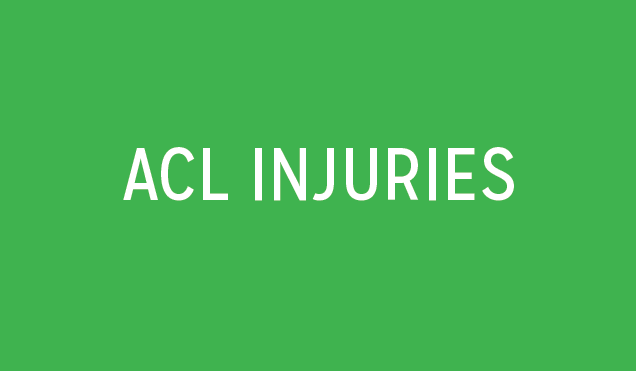The intensity in CHS sports has always been what CHS is known for. The varsity rosters have a certain number of spots and the amount of students trying out for sports are increasing every year. With the intensity of sports, there comes a point where student athletes could be pushed far beyond what their bodies can handle. According to Athletics Director Jim Inskeep, the coaching staff at Carmel works hard to find a balance between intensity as well as helping students prevent injuries.
The anterior cruciate ligament (ACL) is found in the middle of the knee, preventing the shin bone from sliding out in front of the thigh bone. According to the US Library of Medicine, the ligament is most likely to be torn in contact land sports such as basketball, football and soccer. The cause of the tear varies, but in most cases the it is linked to overextension of the knee, quickly changing direction or getting hit hardly from the side of the knee.
Junior and women’s basketball player Angela Selvio, suffered an ACL tear last basketball season, when she landed improperly in route for a lay up. She said it was very had to go through.
“The recovery process was one of the hardest things I have ever gone through. I had to make my knee straighten out and bend more each day and it was so painful,” Selvio said. “I think it was so hard because it is such a painful process, but once you get through the pain, you know that the hurt is what is making it better in the long run, so I just kept pushing through.”
Women’s basketball coach, Craig Brunnemer, also had an ACL injury after his college sports days.
“Luckily for me, I did it after I fini shed my college career. I was playing in a pickup game after my senior year and made a cut to the basket and heard it pop,” Brunnemer said.
shed my college career. I was playing in a pickup game after my senior year and made a cut to the basket and heard it pop,” Brunnemer said.
Inskeep said the reason for the increase in these injuries could be a result of many things, one of which could be the starting of game playing so early on in childhood. While some may believe that this could strengthen the ACL, it may also be causing more stress, making the situation worse.
“I believe there is a fine line between working hard and getting hurt. Coaches at Carmel are really good about starting conditioning early to warm up their athletes for the season, but this may also cause more tension on these fine ligaments and cause more problems. The wellbeing of students is always the most important part of playing the games we play,” Inskeep said.
Sports, such as baseball and softball, started their conditioning when school started, earlier than they ever have before. Volleyball started their conditioning in January with open gyms. While this conditioning and preseason work can help strengthen the ligament, students often also play in travel teams that practice during this time, causing even more stress to the ligament.
Advanced physical conditioning (APC), is a class offered to students who participate in school sanctioned sports that provides strength training and helps with the increase of muscular endurance, which is a recommended step in preventing an ACL injury.
“Strength training will help but I think if a player would play more than one sport they would not be at a lesser risk. I think a player playing one sport and making the same cuts or movements day after day will only wear out the ACL,” Brunnemer said.
Selvio said that getting back to playing basketball was very important to her, and her coaches really helped her get motivated and back to playing instead of throwing in the towel.
To future athletes who are going through the rehabilitation process she said, “I would say they really need to take the rehab seriously, because if they don’t, they will be in a lot of pain for the rest of their life and it is better to take the pain while they are young rather than when they are older.”

































![AI in films like "The Brutalist" is convenient, but shouldn’t take priority [opinion]](https://hilite.org/wp-content/uploads/2025/02/catherine-cover-1200x471.jpg)









































![Review: “The Immortal Soul Salvage Yard:” A criminally underrated poetry collection [MUSE]](https://hilite.org/wp-content/uploads/2025/03/71cju6TvqmL._AC_UF10001000_QL80_.jpg)
![Review: "Dog Man" is Unapologetically Chaotic [MUSE]](https://hilite.org/wp-content/uploads/2025/03/dogman-1200x700.jpg)
![Review: "Ne Zha 2": The WeChat family reunion I didn’t know I needed [MUSE]](https://hilite.org/wp-content/uploads/2025/03/unnamed-4.png)
![Review in Print: Maripaz Villar brings a delightfully unique style to the world of WEBTOON [MUSE]](https://hilite.org/wp-content/uploads/2023/12/maripazcover-1200x960.jpg)
![Review: “The Sword of Kaigen” is a masterpiece [MUSE]](https://hilite.org/wp-content/uploads/2023/11/Screenshot-2023-11-26-201051.png)
![Review: Gateron Oil Kings, great linear switches, okay price [MUSE]](https://hilite.org/wp-content/uploads/2023/11/Screenshot-2023-11-26-200553.png)
![Review: “A Haunting in Venice” is a significant improvement from other Agatha Christie adaptations [MUSE]](https://hilite.org/wp-content/uploads/2023/11/e7ee2938a6d422669771bce6d8088521.jpg)
![Review: A Thanksgiving story from elementary school, still just as interesting [MUSE]](https://hilite.org/wp-content/uploads/2023/11/Screenshot-2023-11-26-195514-987x1200.png)
![Review: "When I Fly Towards You", cute, uplifting youth drama [MUSE]](https://hilite.org/wp-content/uploads/2023/09/When-I-Fly-Towards-You-Chinese-drama.png)
![Postcards from Muse: Hawaii Travel Diary [MUSE]](https://hilite.org/wp-content/uploads/2023/09/My-project-1-1200x1200.jpg)
![Review: "Ladybug & Cat Noir: The Movie," departure from original show [MUSE]](https://hilite.org/wp-content/uploads/2023/09/Ladybug__Cat_Noir_-_The_Movie_poster.jpg)
![Review in Print: "Hidden Love" is the cute, uplifting drama everyone needs [MUSE]](https://hilite.org/wp-content/uploads/2023/09/hiddenlovecover-e1693597208225-1030x1200.png)
![Review in Print: "Heartstopper" is the heartwarming queer romance we all need [MUSE]](https://hilite.org/wp-content/uploads/2023/08/museheartstoppercover-1200x654.png)




